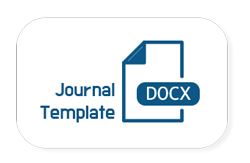EVALUATING THE OPERATIONAL EFFICIENCY OF “TOSHSHAHARTRANSXIZMAT” PUBLIC TRANSPORT UNITS: A CASE STUDY FOR THE YEARS 2020–2023
DOI:
https://doi.org/10.47390/issn3030-3702v3i3y2025N010Keywords:
efficiency, DEA method, public transport, regression model, Toshshahartransxizmat.Abstract
This study analyzes the operational efficiency of “Toshshahartransxizmat,” a public transport service provider in Tashkent city. Eight bus depots under the enterprise were selected as Decision-Making Units (DMUs), and the analysis was conducted based on data from 2020 to 2023. Using the Panel-Corrected Standard Errors (PCSE) regression method, the most impactful input factors on the output indicators were identified and their statistical significance was assessed. Based on the results, the Data Envelopment Analysis (DEA) model was applied to calculate efficiency scores. This model enables performance improvement for less efficient DMUs by aligning their operations with highly efficient counterparts.
References
1. Cooper, William & Seiford, Lawrence & Zhu, Joe. (2011). Data Envelopment Analysis: History, Models, and Interpretations. doi:10.1007/978-1-4419-6151-8_1.
2. Emrouznejad, A. and Cabanda, E. (2015). Introduction to Data Envelopment Analysis and its applications, in Osman et al. (Eds.) Handbook of Research on Strategic Performance Management and Measurement Using Data Envelopment Analysis, pp. 235-255. IGI Global, USA.
3. Farrell, M. J. (1957). The measurement of productive efficiency. Journal of the Royal Statistical Society: Series A (General), 120(3), 253–290. https://doi.org/10.2307/2343100
4. Gadepalli, R. and Rayaprolu, S. (2020). Factors affecting performance of urban bus transport systems in India: A Data Envelopment Analysis (DEA) based approach. Transportation Research Procedia. doi:10.1016/j.trpro.2020.08.214.
5. Goyal, S. et al. (2022). An evaluation of the productivity change in public transport sector using DEA-based model. Management Science Letters, 12, pp. 125-136. doi:10.5267/j.msl.2021.10.001
6. Hoechle, D. (2007). Robust Standard Errors for Panel Regressions with Cross-Sectional Dependence. The Stata Journal: Promoting communications on statistics and Stata, 7(3), pp. 281-312
7. Nikolla, M. et al. (2023). Measuring the efficiency of public transport lines in Albania using DEA model. WSEAS Transactions on Environment and Development, 19, pp. 300-308. doi:10.37394/232015.2023.19.26.
8. Saxena, P. (2019). A benchmarking strategy for Delhi Transport Corporation: An application of Data Envelopment Analysis. International Journal of Mathematical, Engineering and Management Sciences, 4, pp. 232-244. doi:10.33889/IJMEMS.2019.4.1-020.
9. Saxena, P. and Kapoor, A. (2015). Efficiency evaluation of State Transport Undertakings of India using DEA-NN approach. International Journal of Management and Information Technology, 10, pp. 2189-2198. doi:10.24297/ijmit.v10i5.622.
10. Sow, O. et al. (2016). Efficiency analysis of public transportation subunits using DEA and bootstrap approaches: Dakar Dem Dikk case study. Journal of Mathematics Research, 8, pp. 114-114. doi:10.5539/jmr.v8n6p114.
11. Stević, Ž. et al. (2022). Development of a model for evaluating the efficiency of transport companies: PCA–DEA–MCDM model. Axioms, 11, p. 140. doi:10.3390/axioms11030140.
12. Zizka, M. (2017). An assessment of the efficiency and effectiveness of the services of urban transport operators in the Czech Republic. Transformations in Business and Economics, 16, pp. 134-152.
13. Banker, R. D., Charnes, A., & Cooper, W. W. (1984). Some models for estimating technical and scale inefficiencies in data envelopment analysis. Management Science, 30(9), 1078–1092. https://doi.org/10.1287/mnsc.30.9.1078








